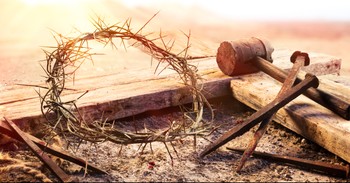A Modern Shepherd
Verse: John 10
What a “good shepherd” would look like today
John 10:10 “I have come that they may have life, and have it to the full.”
Some of the Bible’s rural illustrations simply do not transfer easily into modern life. What is a “good shepherd” like? What did Jesus mean by the term?
A small drama that took place on the slopes of Washington’s Mount Rainier may shed light on the meaning of the “good shepherd.” One Memorial Day weekend a Christian dentist named James Reddick was teaching his 12-year-old daughter and 11-year-old son the joy of mountain hiking. A sudden storm came up, battering them with hurricane-force winds and thick, wet sheets of snow. A blinding “whiteout” made it impossible to see or move on the steep slopes.
Willing to Die
Reddick laboriously dug an oblong trench with an aluminum mess kit, then tucked his children into sleeping bags away from the entrance. He covered the opening with a tarp, but it kept blowing away, exposing the trench to the swirling snow outside. Reddick found he had to lie directly across the opening, using his own weight to hold down the edges of the tarp. His body protected his son and daughter from the howling wind.
Two days passed before searchers finally noticed the corner of a backpack protruding from deep snow. They rushed to the site, hoping the snow-covered mound would contain the three missing hikers. Inside, they found Sharon and David Reddick, very much alive. But the stiff body of their father lay against one wall of the snow cave. He had “taken the cold spot,” in one searcher’s words, by using his own back as the outer wall.
An image something like that must have filled the minds of Jesus’ listeners as he described a good shepherd who “lays down his life” for his sheep (John 10:11). Nothing—not ravaging cold, thieves or wolves—would come between the good shepherd and his sheep. He would die for their protection.
Popularity, for a While
As Jesus headed toward his final days in Jerusalem, the theme of death, his death, kept surfacing in his parables and direct statements. Ironically, his followers were growing in numbers. His popularity had reached a peak with the feeding of 5,000 people on a handful of morsels, a miracle mentioned by all four Gospel writers.
The groundswell of support to make Jesus king deeply impressed his followers; Jesus, however, escaped into the hills (see John 6:15). He would not be a king on the crowd’s terms. He continued on his lonely mission, stirring up controversy and hatred by healing people on the Sabbath and by proclaiming himself equal with God.
Ignoring an Impressive Miracle
Many Jews came over to Jesus after one of his most impressive signs: bringing Lazarus back to life. But, simultaneously, religious leaders concluded callously that it was best for one man (Jesus) to die rather than to upset the whole nation (see John 11:50). Four separate times they tried to seize him.
Jesus came to offer “life”—one of those one-syllable words, swollen with meaning, that John threaded through his narrative. Lazarus received that life in an astonishingly literal way, providing yet another sign of Jesus’ ultimate power. Jesus, though, made preparations to give up his own life, making the ultimate sacrifice of the good shepherd.
Life Questions
What have you sacrificed for the sake of another person?
This devotion is from the NIV Student Bible by Zondervan. Used with permission.



